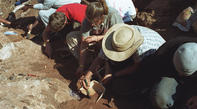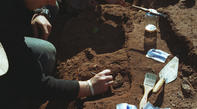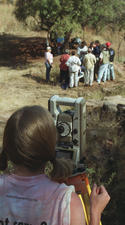The Theory of Evolution
A broad disclaimer: the theory of evolution is not accepted by everyone. Despite more than 100 years of scientific investigation and storerooms full of fossils, there are many people who find it difficult to reconcile evolution with their religious and personal beliefs.

In fact, the conflict between evolution and creationism is just as vehement today as it was when a cocky young naturalist called Charles Darwin first shocked the world with his thrilling best-seller called ‘On the origin of species’.
If you doubt the prevalence of the anti-evolutionary brigade, just do your research on ‘creationism’ and you will find a plethora of information dedicated to dismissing, debunking and downright demonising evolution. However, this isn’t the time or place to get into this particular debate and the opinion that the two schools are not mutually exclusive is offered.
Out-of-Africa

It is estimated that over 35% of the planet’s hominid fossils found thus far have been unearthed in or around the Cradle of Humankind – currently totalling more than 1000 specimens from about 11 different sites. Furthermore, these fossils are usually in an excellent state of preservation, thanks to being buried in dry, dark caves, and this has enabled several generations of scientists and anatomists to probe ever deeper into our past.
And there’s more! Because the Cradle of Humankind also contains tens of thousands of fossils that bear evidence to the flora and fauna of the area’s ancient ecosystems.
Excavations in the various caves of the Cradle of Humankind have yielded evidence of a vast array of amazing and even terrifying creatures that once shared the landscape with our rather puny ancestors: there are extinct mammals, rodents, porcupines, buck, baboons, monkeys, enormous buffalos with 3 meter long horns, sabre-toothed cats, the so-called false sabre-toothed cat Dinofelis, the strange wolf-dog of Gladysvale, the three-toed horse, the short-necked giraffe, not to mention the giant dassies, giant hyenas and giant warthogs (which may have weighed around 120 kilograms).
The significance of the Cradle of Humankind’s fossil wealth, therefore, has an unquestionable universal significance, and this hard evidence has also lent weight to the Out-of-Africa theory, which states that modern humans evolved in Southern Africa before migrating north and colonising the Earth. This hypothesis is further strengthened by the many examples of stone tools found in the area, and has recently been more-or-less confirmed by sophisticated studies of genetic divergence within modern humans.
Much to be Discovered

Unfortunately, from a genealogical point-of-view, it is still difficult to determine exactly who begat whom, and it must be acknowledged that human evolution is not yet an exact science. In reality, our understanding of our hominid ancestors is based on a relatively tiny number of fossils and new discoveries continually force us to reconsider and revise our family tree.
But this just adds to the sense of excitement within the burgeoning field of palaeoanthropology and, even after 80 years of continuous excavation in the Cradle of Humankind, there is still much to be discovered.
Today, the Cradle of Humankind area continues to attract experts from around the world who are eager to add their names to the already illustrious list of scientists who have made contributions to the field. Who would have thought that studying the past would be so cutting-edge?
The old ‘relay-race’ model of human evolution whereby one species smoothly passed the baton onto the next had been shown to be invalid. This is a pity because it used to be quite simple, like in the famous diagram of an ape morphing into a modern human: Apes became Australopithecus, which became Homo habilis, which became Homo erectus, which became Homo sapiens. The fossils found in the Cradle of Humankind and Eastern Africa have shown that there were often several different species of hominids living in the same area at the same time.
What caused one species to survive while others died out? It’s hard to say with certainty. Perhaps it one species developed more suitable adaptations. Perhaps one species developed better tools to help it survive. Perhaps one species grasped the concept of language earlier than the others.
Perhaps the species intermarried (presumably to the dismay of their parents). Or perhaps one species confronted and killed off the others (quite a likely possibility considering our more recent past). All these questions are still being hotly debated by the Palaeo community, and there are a number of specialist publications offering detailed analyses of each position.